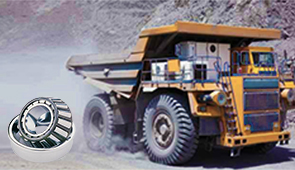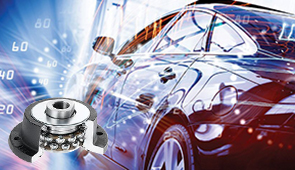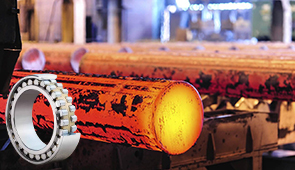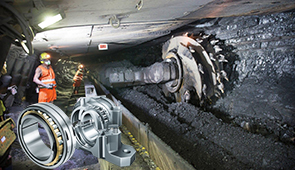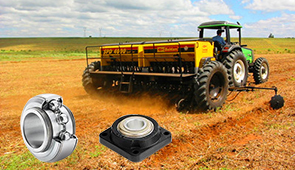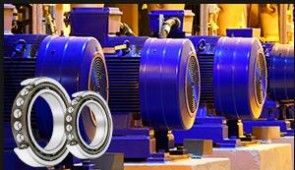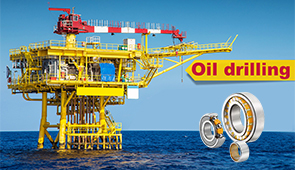SKF Bearing Failure Chart: Understanding Bearing Failures and Their Root Causes
Bearings are the backbone of countless industrial applications, ensuring smooth, efficient, and reliable operation of machinery. However, even the most robust bearings can fail over time due to a multitude of factors. Understanding the root causes of bearing failures is crucial, as it not only helps in diagnosing issues but also in preventing costly downtime and extending the lifespan of machinery. This article dives into the SKF Bearing Failure Chart—a detailed and invaluable resource for identifying common bearing failure modes and their underlying causes. Whether you’re a maintenance professional, an engineer, or a machinery operator, this guide will equip you with the knowledge to spot potential problems, implement preventative measures, and optimize the performance of your equipment.
Types of Bearing Failures
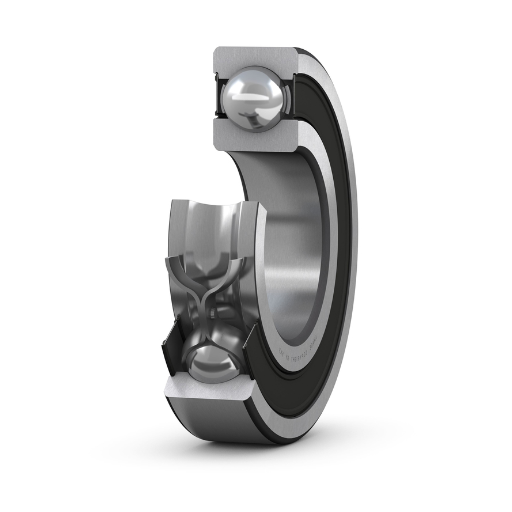
Corrosion and Adhesive Wear
Corrosion is a common bearing failure that occurs with the introduction of moisture, contaminants, or chemicals within the lubricant or on the bearing surface. Such intrusion leads to rust or some other form of be it oxidative damage that, over time and through a series of processes, may impair the bearing’s structural integrity. Such corrosion can typically be identified by reddish-brown stains or some discoloration of the rolling elements and races. The best cure for corrosion is to keep the working environment clean, use proper seals on the bearing to keep any contaminants out, and use anti-corrosive additives in the lubricants.
Adhesive wear, though, occurs when rolling elements and raceways are not properly lubricated or they are coming into excessive contact. The wear comes about when the lubricant film ruptures, giving rise to metal-to-metal contact and the transference of materials between surfaces. Some of the prominent symptoms of adhesive wear are smearing, buildup, and discoloration on bearing surfaces, which further compromise its affordance, thereby accelerating friction and heating. Preventing adhesive wear is all about selecting the right lubricant and maintaining proper lubrication intervals.
The timely focus maintenance strategy for defense against corrosion and adhesive wear is to monitor operating conditions, inspect bearing components on a regular basis for early symptoms of damage, and conduct rectifications on lubrication issues as soon as they are observed. As an aside, adequate training of personnel on equipment handling and storage could prove very important; this is because improperly stored bearings may already have surface damage that can increase their vulnerability to corrosion or adhesive wear when put into operation.
Overheating and Smear
Overheating in bearings occurs when their operating temperatures exceed the bearing’s temperature limits, leading to structural degradation and failures. Usually, this is because of high friction caused by something like inappropriate lubrication, overloading, or misalignment of bearing components. High temperature alters the metallurgical properties of the bearing material, including hardness diminution, which contributes to increased wear rates. Visual clues include discoloration of a bearing surface, often shades of blue or brown, which is an indicator of extreme temperature exposure.
Smearing usually happens with the effects accompanying heat; this surface damage is localized and arises from poor lubrication or high speed. It comes about when the oil film cannot prevent direct metal-to-metal contact. During operations, smeared bearing surfaces can undergo cumulative damage that ultimately degrades load-carrying capabilities and compromises the bearing function, hence ending in premature failure.
Avoiding overheating and smearing can be achieved by ensuring sufficient lubrication quantities and lubricant compatibility with load and temperature. In addition, regular inspections of bearing alignment and load distribution are important to avoid stress concentrations. Furthermore, temperature-monitoring systems can also allow timely intervention in overheating incidents. Implementing these preventive measures greatly increases the service life and reliability of bearings.
Contamination and Debris
Contamination and debris are some examples of external causes that can cause bearing failure. Failure can occur prematurely because of disturbances in the operation of bearing surfaces or due to accelerated wear. Common contaminants include dust, dirt, water, and any foreign particles that manage to enter the lubricant or the bearing assembly. Such particles impart abrasive action on the bearing surface, causing damage, friction, and local overheating.
Needless to say, the remedy lies in installing good seals that will keep all foreign materials from entering while also retaining the lubricant within the bearing. Periodic maintenance, including cleaning and replacing the seals, is an effective way to act against contamination. Additional protection is afforded by the implementation of an advanced lubricant filtration system, which captures super-fine contaminant particles that still manage to get through other means. Studies in the industry show that over 50% of bearing failures have been related to lubrication problems that were a direct result of contamination. This shows the importance of rigorous monitoring and control measures.
When contaminants and debris are optimally controlled, operators can also ensure that bearing systems are reliable and efficient, thereby reducing downtime and increasing service life.
Common Causes of Bearing Damage
Improper Lubrication Techniques
Bearing failure caused by improper lubrication is one of the first on the list of premature damages in industrial applications. Errors may come in the form of inappropriate lubricant type selection, under-lubrication, or over-lubrication. These initiate processes that tend to diminish the effectiveness of the lubrication film and, thus, the resultant effect of increased frictional wear and maximum temperature rise that finally leads to the degradation of the components.
One example is when the lubricant does not suit the temperature or load condition of the application; in such cases, excessive viscosity breakdown or insufficient film strength may occur. Another condition may be under-lubrication, where metal-to-metal contact might occur and result in surface wear and a pitting pattern. The opposite case is over-lubrication, where excess lubricant squeezes out through the seal, bringing the risks of ingress of contaminants and thermal buildup.
Such recent statistics from the industry emphasize the need for utmost precautions with lubrication; more than 40% of bearing failures have been attributed directly to lubrication problems. To use a lubrication management system, including automatic dispensing or condition-monitoring sensors, is one way to cut out many of these problems. These novel technologies assure the proper distribution of lubricant and keep a measure of viscosity and contamination levels in real-time, thus greatly promoting the dependability of bearing systems and lessening maintenance costs.
Excessive Load and Static Friction
Excessive load and static friction are dreaded issues in the bearing arena. If the force exceeds the bearing of a force beyond that which it was designed to withstand, this results in stress concentration and faster wear. Plastic deformation, surface fatigue, or pitting usually ensues. Static friction is the frictional force you feel when there is resistance to the initiation of movement between two touching surfaces that may eventually lead to fretting corrosion or micro-slippage. Both these conditions are hazardous to bearing life and hence should be countered by an accurate approach concerning design, selection of the right materials, and operations.
In my view, resolving these environmental issues must start by ensuring all working loads are within the designated bearing capacity. This calls for an accurate calculation of loads and detailed application analysis together in the design phase itself. For example, cases of excessive load can be handled by the installation of bearings with a higher load capacity or by carrying out load distribution where forces are evenly distributed. As far as static friction is concerned, resistance to movement can be minimized by careful alignment, appropriate surface finishing, and pre-lubrication, thereby improving the efficiency of the system.
Further, I see it fit that I emphasize strongly the implementation of predictive maintenance strategies capable of monitoring for states that lead to excessive load or undesired static friction. These all can be vested in tools, namely, vibration analysis, load sensors, and thermal monitoring, which are capable of delivering early warnings of any problems with stresses or friction. Prevention-oriented maintenance can guarantee bearing longevity and performance optimization while avoiding all unexpected downtimes.
Vibration and Rolling Element Issues
Vibration is the primary sign that something might be wrong in the rolling element bearings. Excessive vibration levels are generally caused by one of many factors: wear on surfaces, misalignment of components, imbalance, or lack of proper lubrication. Correct detection of vibration signature and analysis are of utmost importance in diagnosing the cause. Most of the advanced vibration monitoring systems use fast Fourier transform (FFT) algorithms and waveform analysis techniques to analyze data and identify faults, for example, abnormal conditions associated with raceway irregularities, cage instability, or rolling element damage.
Such information from these systems will, therefore, allow for predictive maintenance, thereby reducing reactive maintenance styles and increasing equipment uptime. For example, the indication of impaired vibration can be monitored through amplitude trends as they increase gradually when spalling or pitting causes damage to the bearing surfaces. High-frequency detection, when combined with intelligent trending analysis, ensures that rolling element problems can be addressed accurately and removes the possibility of catastrophic failures.
In addition to external operations such as load dynamics, environmental conditions need to be taken into account as factors contributing to vibration failure. Thus, when combined with real-time monitoring, advanced analytics will produce actionable insights designed to improve system performance and safeguard the reliability of critical machinery.
Interpreting the SKF Bearing Failure Chart
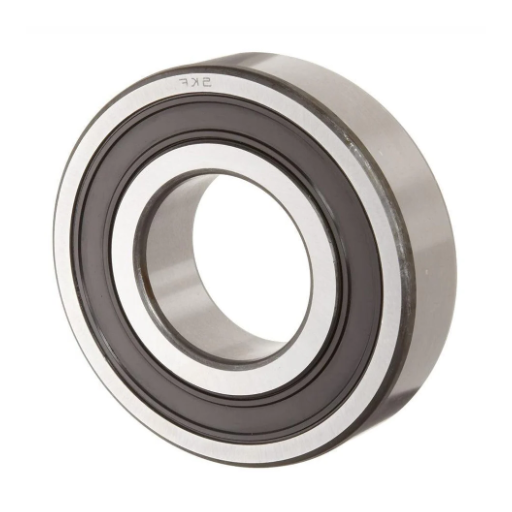
Key Metrics and Indicators
The SKF Bearing Failure Chart provides essential metrics to allow the engineers to diagnose the root causes of bearing degradation effectively. Key features such as spalling, pitting, and raceway discoloration indicate operational stress, contamination, or poor lubrication. High vibration amplitude steers toward maleficent wear progression and misalignment, and these may be measured using any units of velocity, like mm/s or in/s, or acceleration, such as “g”.
Temperature indicators are no less important; excessive heat reaching above 120°C (248°F) suggests lubrication failure or an overloading condition. Particle count from the lubricant in terms of parts per million (ppm) would give a view of contamination due to debris ingress or early material fatigue.
Such a scenario makes the implementation of real-time monitoring tools integrated with predictive algorithms very desirable so that quantification of these can find preemptive correction. State-of-the-art sensors and machine-learning models will track these metrics continuously under varying operational loads, thus allowing improved precision in failure prediction and prolonged asset life.
Identifying Symptoms of Bearing Failure
To recognize symptoms of bearing failure, it is necessary to understand the operational setting and performance of the machinery in question. Typical indications include abnormal vibration, which is detected by using vibration analysis equipment to monitor abnormalities in frequency or amplitude. Another such important symptom is a rise in the operating temperature, which generally points to higher friction, usually caused due to inappropriate lubrication, misalignment, or internal damage.
Noise anomalies like grinding, squealing, or clicking can be clues suggesting actual wear, contamination, or a mechanical problem within the bearing assembly. Visually, discoloration, pitting, or cracking of the raceways or rolling elements can be observed, indicating material fatigue or improper installation.
Such symptoms can be detected and analyzed with greater accuracy by the maintenance teams with the help of advanced diagnostic techniques, namely, ultrasonic inspection and thermal imaging. Leveraging these tools, along with an integrated data platform and historical performance logs, facilitators can undertake predictive maintenance on the equipment, thus increasing reliability and reducing downtime and operational costs.
Preventive Maintenance Strategies
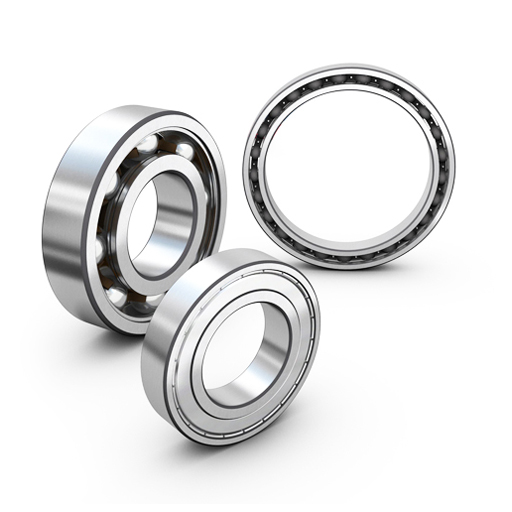
Importance of Proper Lubrication
The proper lubrication keeps the equipment in great shape as well as safe for operation. Without lubrication to prevent friction between moving parts, wear and thermal stresses develop. Mishandling or poor lubrication becomes a cause for mechanical failures that increase equipment downtime and maintenance costs.
The modern approach to lubrication uses more advanced lubricants for meeting the challenges posed by machinery. Synthetic lubricants may operate at extreme temperatures and protect well against heavy loading. Real-time monitoring makes it possible to deliver the right lubrication as per need, utilising automatic lubricators from IoT-based technologies.
By combining lubrication best practices with predictive maintenance systems and past operational records, industries can improve on efficiency while drastically cutting down on unscheduled failures. Studies show that improper lubrication causes nearly 50% of mechanical failures; thus demonstrating its importance in preventive maintenance programs.
Routine Inspections and Alignment Checks
Routine inspections and alignment checks are procedures that are conducted for maintaining the best performance of machinery and extending equipment life. Any misalignment between two machine parts, like shafts, couplings, and belts, would give rise to abnormal vibrations that cause more energy to be wasted and eventually bring about mechanical failure. An alignment procedure should include systematic inspection that involves visual checks for any obvious signs of wear, misalignment, or damage, followed by precision comparison using dial indicators or laser alignment systems, or the latest generation of IoT-enabled alignment sensors. As with many conditions affecting machinery, regular checks for the alignment of critical components greatly save unplanned downtime and raise the operational efficiency.
Incorporating data-driven technologies helps improve an inspection’s effectiveness during routine maintenance. For example, vibration analysis and infrared thermography are methods typically used to detect incipient misalignments or mechanical faults that could pass all normal inspections. These technologies allow maintenance staff to match observed symptoms with a specific failure mode so that corrective action can be taken. Meanwhile, recent developments in IoT and predictive analytics platforms build on this by allowing the remote monitoring of alignment and other parameters of operation in real-time, which greatly strengthens their ability to preemptively address a serious issue before it might actually be considered.
The use of predictive maintenance data in conjunction with traditional techniques will better facilitate alignment checks while minimizing human error. Using historical performance data and, in continuation, the steady flow of diagnostic information, one may erect the basis for trend detection and possible scenarios for misalignment forecast. Certain studies have postulated that by proper alignment, wear to mechanical components is minimized, but then also energy consumption is reduced by about 10-15%. A holistic data-centric approach to routine inspections is the direct recipe for the industry to cut down its operational costs for better machine reliability toward a greener manufacturing form.
Proactive Measures to Prevent Failures
Being able to prevent unexpected equipment failures in machinery maintenance guarantees continuous operations. Central to this approach is the adoption of predictive maintenance techniques that include vibration analysis, thermography, and ultrasonic inspection. These techniques allow for early identification of anomalies, so that interventions take place before a small problem develops into a major failure.
With evolutionary algorithms applied to operational data, the accuracy level of predicting failure can be substantially improved. For example, an advanced predictive analytics model trained using historical performance data could detect subtle patterns indicative of imminent component wear or misalignment. Thus, with the adoption of such systems to complement real-time monitoring technology, an advantage is gained whereby actions can be taken before time and maintenance can be planned optimally.
Implementing a good lubrication management system is what will assist in reducing the wear of the equipment. It involves a lubrication program that takes into consideration the operating conditions and load requirements so as to provide minimum friction and heat generation, thereby prolonging the life of the parts. Other methods include an automatic lubrication system with IoT integration, which will continuously monitor and guarantee that everything is kept adequate.
When these techniques are put into effect in a continuous improvement framework, they guarantee longevity for the plant and improve worker safety, cost-effectiveness, and sustainability in all other ways. Central to this integrated approach and supported by the newest technology and hard data analysis is the ability for industries to correctly predict failures before they happen.
Application Across Various Industries
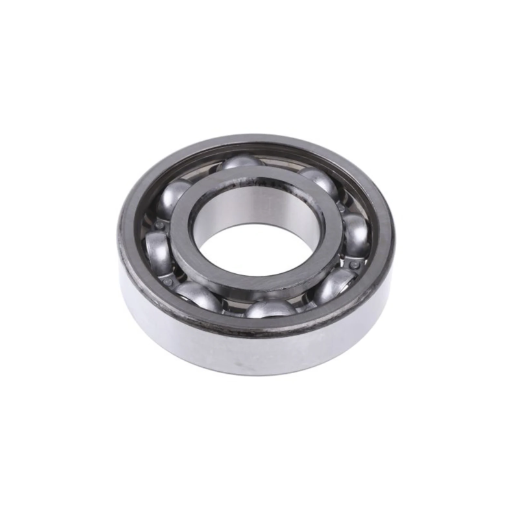
Manufacturing Sector Insights
In the past few decades, the manufacturing sector has undergone an immense transformation due largely to technological advances and data-driven methods. Predictive maintenance, with the assistance of current tools such as the IIoT, machine learning algorithms, and real-time data analytics, has become a very important methodology in the industry. Manufacturers, in effect, use the approach to find out the possibility of equipment failure before downtime occurs, thereby reducing unplanned downtime to the highest degree, along with maximizing operational efficiency. For example, sensors set on machines keep collecting vibration, temperature, and pressure data, which in turn gets analyzed under predictive maintenance methods to detect any anomaly or deviation from accepted norm performance benchmarks.
Beyond predictive maintenance, robotization and automation have redefined production lines. Robotic systems augmented with vision technology and AI-powered control systems carry out fast and highly precise repetitive tasks. It empowers manufacturers to boost productivity, reduce human error, and protect workers from hazardous working environments. Further, digital twins allow manufacturers to create a virtual twin of a physical manufacturing process so that they can try and optimize their production workflows before enacting these changes on an actual shop floor. Hence, making huge contributions to prototyping and quality assurance.
Sustainability is yet another domain under consideration in the manufacturing sector. On the other hand, energy optimization platforms and waste recycling systems continuously curb the ecological footprint of any manufacturer while still leading to sizable savings. Energy management systems, for instance, allow tracking and controlling of energy consumption in various facilities, enabling the identification of areas of inefficiency and corrective action measures to be enforced. Hence, overall, this amalgamation of predictive technologies and automation with a heavy focus on sustainability represents the core evolution in modern manufacturing toward a smarter, safer, and more sustainable way of doing business.
Automotive Industry Applications
Technological advances have swept across the automotive industry in efficiency, safety, and sustainability domains. Some examples of modern engineering applications implemented in the automotive industry are:
- Electric and Hybrid Vehicles: With the thrust on emission reduction, electric cars and hybrid vehicles have been at the forefront of the automotive sector. Development continues in battery technologies and charging infrastructures, which make for easier adoption and affordability in general.
- Driverless Technologies: Using sensors, algorithms, and software, an autonomous driving system could enable a vehicle to drive on its own. Some of the companies leading the technological development of these vehicles include Tesla and Waymo, with analysts forecasting the market for autonomous vehicles to grow into a $2.1 trillion one by 2030. Safety features such as adaptive cruise control or lane-keeping assist are already found in most supplementary systems on modern vehicles.
- Connected Vehicle and IoT Applications: IoT integration lets vehicles communicate with each other, with infrastructure, and with other systems. Connected vehicles assist in traffic management, navigation, and remote diagnosis. Studies reveal that more than 75% of all new cars will have embedded IoT capabilities by the year 2025, thus facilitating maintenance and forging data-centric efficiencies.
- Predictive Maintenance: Predictive maintenance uses AI with the help of sensors for identifying potential issues that could lead to the breakage of whatever is being maintained. For example, sensors are used to check brakes, tires, and battery systems of vehicles and give warnings for preemptive intervention to take place; this reduces downtime and extends vehicle life. Studies identify that operational costs can be reduced by 30% with predictive maintenance.
- Lightweight Materials and Advanced Manufacturing: Advances in materials science have introduced lightweight yet strong materials such as carbon fiber composites and high-strength aluminum alloys. Reducing the overall weight of the vehicle, these materials aid in improving fuel efficiency without compromising on safety or performance. Advanced manufacturing also employs 3D printing techniques, which drastically reduce time-to-market of prototypes as well as allow the production of highly customized components, thus providing much more flexibility in design and cost efficiency.
Together, the above applications create a paradigm shift in automotive engineering, taking the industry toward smart, safe, and environmentally friendly transportation systems.
Aerospace and High-Performance Bearings
Aerospace engineering demands attention to precision and reliability, duties that are far more crucial when considering bearings. High-performance bearings are used in various aerospace applications, such as jet engines, landing gears, and flight control systems. They should withstand extreme temperatures, high speed, huge loads, low friction, and wear resistance.
To this end, and in the face of such environmental and performance demands, materials like ceramic hybrids, titanium alloys, and stainless steels are increasingly used. For example, ceramic bearings are considered superior because of their lower density, high resistance to heat, and longer working life when compared to their conventional steel counterparts. Similarly, DLC and chrome plating coatings further improve the bearing performance by increasing surface hardness and wear resistance.
In addition, introducing predictive maintenance systems has become another key innovation for aerospace bearings. The embedded sensors in these smart systems measure vibration, temperature, rotational speed, and many other metrics relevant to the functioning of each component. This information is then fed into the modern data analysis tools, allowing engineers to start correlating various signals to early anomaly detection, finally leading to drastically reducing the risks of catastrophic failures. By employing such a technology-driven strategy, the aerospace industry continues to stretch further the next levels of performance and safety that systems can meet under the rigorous demands of commercial and defense aviation.
Frequently Asked Questions (FAQ)
Q: What factors contribute to premature bearing failures?
A: Premature bearing failures can result from several factors, including improper mounting, inadequate grease application, or excessive vibration data. An investigation into the bearing design and the specific bearing size can reveal critical insights. Additionally, factors such as looseness in the assembly or excessive axial load can significantly reduce the operational lifespan of the bearing.
Q: What role does lubrication play in bearing service life?
A: Lubrication is essential for reducing friction and wear between the inner and outer races of a bearing. The right type of grease ensures that roller and ball bearings function optimally, extending their service life. Insufficient lubrication can lead to sliding contact and increased heat, resulting in damage and potential failure, which can be tracked using the SKF bearing failure chart.
Q: How can vibration data help in bearing failure analysis?
A: Vibration data is a critical component of failure analysis as it provides insights into the operating condition of bearings. By monitoring vibration patterns, maintenance departments can detect anomalies that indicate potential defects or impending failures. This proactive approach allows for timely interventions, reducing the likelihood of catastrophic failures in equipment such as pumps or paper machines.
Q: What is the significance of bearing design in preventing failures?
A: Bearing design plays a crucial role in ensuring the durability and reliability of the bearing under various operational conditions. Understanding the mechanics behind roller and ball bearing designs helps engineers specify the correct bearing type for specific applications. Factors such as load capacity and geometry are essential for preventing failures and extending the service life of the bearing.
Q: How do I calculate the expected service life of a bearing?
A: To calculate the expected service life of a bearing, one can use the basic life equation, which incorporates bearing load, bearing size, and RPM. This involves determining the dynamic load rating and applying it to the actual loads experienced during operation. Accurate calculations help maintenance departments make informed decisions regarding new installations and replacements.
Q: What are the common signs of bearing damage?
A: Common signs of bearing damage include unusual noise, excessive vibration, and temperature variations. Inspectors should look for visual signs such as pitting on the raceways, discoloration, or debris in the grease. Regular monitoring and timely analysis using the SKF bearing failure chart can help identify these issues early, preventing further damage to the machinery.
Q: How does improper loading affect bearing performance?
A: Improper loading can drastically affect bearing performance, leading to uneven wear and potential failure. Overloading or misalignment can create excessive axial loads, resulting in increased stress on the bearing components. Understanding the limits of each bearing type and ensuring proper installation practices can mitigate these risks and enhance overall reliability.
Q: What should I do if I find an old bearing during inspection?
A: If an old bearing is found during inspection, it is essential to assess its condition using the SKF bearing failure chart. Look for signs of wear, such as surface damage or changes in dimensions. Depending on the findings, it may be necessary to replace the bearing to avoid potential failures that could lead to costly downtimes or equipment damage.
UCTH213-40J-300 with Setscrew(inch)
CNSORDERNO: Normal-duty(2)
TOGN: UCTH213-40J-300
SDI: B-R1/8
SD: 2 1/2
UCTH212-39J-300 with Setscrew(inch)
CNSORDERNO: Normal-duty(2)
TOGN: UCTH212-39J-300
SDI: B-R1/8
SD: 2 7/16
UCTH212-38J-300 with Setscrew(inch)
CNSORDERNO: Normal-duty(2)
TOGN: UCTH212-38J-300
SDI: B-R1/8
SD: 2 3/8
UCTH212-36J-300 with Setscrew(inch)
CNSORDERNO: Normal-duty(2)
TOGN: UCTH212-36J-300
SDI: B-R1/8
SD: 2 1/4
UCTH211-35J-300 with Setscrew(inch)
CNSORDERNO: Normal-duty(2)
TOGN: UCTH211-35J-300
SDI: B-R1/8
SD: 2 3/16
UCTH211-34J-300 with Setscrew(inch)
CNSORDERNO: Normal-duty(2)
TOGN: UCTH211-34J-300
SDI: B-R1/8
SD: 2 1/8









